Banh Phu The, often called the “husband and wife cake,” gets its unique texture and vibrant color from a meticulous blend of ingredients and preparation techniques, offering a delicious taste of Vietnamese culture; let SIXT.VN be your guide to discover this delightful treat and other culinary gems in Vietnam. This comprehensive guide explores the elements that make Banh Phu The so special and how you can experience the best of Vietnamese cuisine with SIXT.VN’s travel services, from airport transfers to curated food tours.
1. What is Banh Phu The and Why is it Special?
Banh Phu The, also known as the husband and wife cake, is a traditional Vietnamese dessert symbolizing love and marital harmony. It’s a sweet, chewy, and visually appealing treat often served at weddings and special occasions. The cake’s unique qualities stem from its ingredients and preparation, making it a standout in Vietnamese cuisine.
1.1. Historical Significance
Banh Phu The holds a special place in Vietnamese culture, often associated with the love story of a king and queen. The cake is a symbol of togetherness and is traditionally exchanged between couples to express their commitment and affection. The name “husband and wife cake” reflects this deep-rooted cultural significance.
1.2. Cultural Importance in Vietnamese Weddings
In Vietnamese weddings, Banh Phu The is an essential part of the traditional offerings. Its presence symbolizes a harmonious and prosperous marriage. The cake’s sweet taste represents the sweetness of love, and its chewy texture signifies the enduring bond between husband and wife.
1.3. Key Ingredients and Their Roles
The main ingredients contributing to the unique texture and color of Banh Phu The include:
- Glutinous Rice Flour: Provides the chewy, elastic texture that is characteristic of the cake.
- Tapioca Starch: Adds a translucent quality and enhances the chewiness.
- Mung Bean Paste: Offers a sweet, creamy filling with a slightly nutty flavor.
- Coconut Milk: Infuses richness and a subtle tropical aroma.
- Pandan Leaves: Contribute a vibrant green color and a distinctive fragrance.
- Annatto Seeds: Impart a natural yellow or orange hue to the outer layer.
These ingredients are carefully selected and combined to create a balanced flavor and appealing appearance.
2. What Role Does Glutinous Rice Flour Play in Banh Phu The’s Texture?
Glutinous rice flour is crucial for the distinctively chewy texture of Banh Phu The. Its unique properties, stemming from its high starch content, create the cake’s signature mouthfeel, making it a delightful treat to savor.
2.1. Understanding Glutinous Rice Flour
Glutinous rice flour, also known as sweet rice flour or mochiko, is made from short-grain rice that becomes sticky and glutinous when cooked. Unlike regular rice flour, it contains a higher proportion of amylopectin, a type of starch that contributes to its sticky texture.
2.2. How it Creates the Chewy Texture
When glutinous rice flour is mixed with water and cooked, the starch granules absorb the liquid and swell, forming a gel-like structure. This gelatinization process results in a dough that is highly elastic and chewy. The high amylopectin content prevents the starch from recrystallizing, ensuring that the cake remains soft and chewy even after cooling.
2.3. Comparison with Other Flours
Compared to other flours, such as wheat flour or regular rice flour, glutinous rice flour produces a significantly chewier texture. Wheat flour contains gluten, which can make the cake tougher if overmixed. Regular rice flour, on the other hand, lacks the high amylopectin content of glutinous rice flour, resulting in a drier and less elastic texture.
2.4. Tips for Working with Glutinous Rice Flour
To achieve the best results when making Banh Phu The, it’s important to handle glutinous rice flour properly:
- Measure Accurately: Use precise measurements to ensure the correct ratio of flour to liquid.
- Mix Gently: Avoid overmixing the dough, as this can develop too much elasticity and make the cake tough.
- Steam Properly: Steam the cake until it is fully cooked and translucent.
- Allow to Cool: Let the cake cool completely before serving to allow the texture to set properly.
3. How Does Tapioca Starch Contribute to the Texture and Appearance?
Tapioca starch enhances both the texture and appearance of Banh Phu The, lending it a translucent quality and adding to its overall chewiness. This starch ensures the cake is visually appealing and texturally delightful.
3.1. Understanding Tapioca Starch
Tapioca starch is extracted from the cassava root and is known for its pure white color and neutral flavor. It is a versatile ingredient used in many desserts and dishes to add thickness and improve texture.
3.2. Role in Creating Translucency
When tapioca starch is cooked, it becomes transparent, giving Banh Phu The a glossy and translucent appearance. This visual appeal is particularly important for a cake that is often presented at special occasions.
3.3. Enhancing Chewiness
In addition to its visual properties, tapioca starch also contributes to the chewiness of Banh Phu The. It works in synergy with glutinous rice flour to create a texture that is both elastic and slightly sticky.
3.4. Tips for Incorporating Tapioca Starch
To effectively incorporate tapioca starch into your Banh Phu The recipe:
- Sift the Starch: Sifting helps to prevent lumps and ensures even distribution in the batter.
- Mix Thoroughly: Make sure the tapioca starch is fully dissolved in the liquid before cooking.
- Control the Heat: Cook the mixture over medium heat to prevent scorching and ensure proper gelatinization.
4. What Natural Ingredients Give Banh Phu The Its Distinctive Colors?
Banh Phu The’s vibrant colors come from natural ingredients such as pandan leaves and annatto seeds. These elements not only provide visual appeal but also contribute to the cake’s unique flavor profile, making it a feast for the eyes and the palate.
4.1. Source of Green Color: Pandan Leaves
Pandan leaves are widely used in Southeast Asian cuisine for their aromatic fragrance and natural green color. They are an essential ingredient in Banh Phu The, providing a subtle vanilla-like flavor and a vibrant green hue.
4.1.1. Extracting Green Color from Pandan Leaves
To extract the green color and flavor from pandan leaves:
- Wash the Leaves: Thoroughly wash the pandan leaves to remove any dirt or impurities.
- Cut into Pieces: Cut the leaves into small pieces to make them easier to blend.
- Blend with Water: Blend the leaves with water to create a green extract.
- Strain the Extract: Strain the mixture to remove the pulp and obtain a smooth, green liquid.
4.1.2. The Flavor Profile of Pandan Leaves
Pandan leaves have a unique flavor that is often described as a combination of vanilla, almond, and coconut. This flavor enhances the overall taste of Banh Phu The, adding a layer of complexity and aroma.
4.2. Source of Yellow/Orange Color: Annatto Seeds
Annatto seeds, also known as achiote, are derived from the fruit of the annatto tree. They are commonly used as a natural food coloring agent, imparting a yellow or orange hue to dishes.
4.2.1. Extracting Yellow/Orange Color from Annatto Seeds
To extract the yellow or orange color from annatto seeds:
- Soak the Seeds: Soak the annatto seeds in warm water or oil for several hours.
- Strain the Liquid: Strain the liquid to remove the seeds and obtain a vibrant yellow or orange infusion.
- Use the Infusion: Use the colored liquid in the Banh Phu The recipe to achieve the desired hue.
4.2.2. The Flavor Profile of Annatto Seeds
Annatto seeds have a mild, slightly peppery flavor with a hint of nuttiness. They add a subtle earthy note to Banh Phu The, complementing the sweetness of the other ingredients.
4.3. Other Natural Coloring Options
While pandan leaves and annatto seeds are the most traditional choices, other natural coloring options include:
- Turmeric: Provides a vibrant yellow color and a mild, earthy flavor.
- Beetroot Juice: Offers a natural red or pink hue.
- Butterfly Pea Flower: Creates a beautiful blue or purple color.
These alternatives can be used to customize the appearance of Banh Phu The while maintaining its commitment to natural ingredients.
5. How Does Coconut Milk Influence the Flavor and Texture of Banh Phu The?
Coconut milk is a key ingredient that enriches Banh Phu The with its creamy texture and tropical flavor. It is integral to the cake’s overall profile, contributing to its unique taste and mouthfeel.
5.1. The Role of Coconut Milk in the Recipe
Coconut milk is used in Banh Phu The to:
- Add Moisture: It provides essential moisture to the dough, preventing it from becoming dry.
- Enhance Richness: Its creamy texture adds richness and depth of flavor to the cake.
- Create a Smooth Consistency: It helps to create a smooth and consistent batter.
5.2. Types of Coconut Milk and Their Impact
Different types of coconut milk can be used in Banh Phu The, each with its own impact on the final product:
- Full-Fat Coconut Milk: Offers the richest flavor and creamiest texture.
- Light Coconut Milk: Provides a lighter flavor and fewer calories.
- Coconut Cream: Contains a higher fat content and creates an even richer, more decadent cake.
The choice of coconut milk depends on the desired flavor intensity and texture.
5.3. Step-by-Step Guide to Making Coconut Milk at Home
For those who prefer a more authentic experience, coconut milk can be made at home:
- Grate Fresh Coconut: Grate the flesh of a fresh coconut.
- Mix with Warm Water: Mix the grated coconut with warm water.
- Squeeze the Mixture: Squeeze the mixture to extract the coconut milk.
- Strain the Milk: Strain the milk through a cheesecloth to remove any solids.
Homemade coconut milk adds a unique freshness and flavor to Banh Phu The.
5.4. Tips for Using Coconut Milk in Banh Phu The
To ensure the best results when using coconut milk in your recipe:
- Shake Well: Shake the can of coconut milk before using to ensure the fat and liquid are evenly distributed.
- Do Not Overheat: Avoid overheating the coconut milk, as this can cause it to separate.
- Use Fresh Ingredients: Use fresh coconut milk for the best flavor and texture.
6. How Does Mung Bean Paste Contribute to the Overall Taste Profile?
Mung bean paste is a central element in Banh Phu The, offering a sweet and creamy filling with a subtle nutty flavor. This ingredient adds depth and complexity to the cake, enhancing its overall taste profile.
6.1. Understanding Mung Bean Paste
Mung bean paste is made from split mung beans that are cooked, mashed, and sweetened. It is a popular filling in many Asian desserts, prized for its smooth texture and delicate flavor.
6.2. Preparing Mung Bean Paste for Banh Phu The
To prepare mung bean paste for Banh Phu The:
- Soak the Beans: Soak the split mung beans in water for several hours until they are soft.
- Cook the Beans: Cook the beans until they are tender and easily mashed.
- Mash the Beans: Mash the cooked beans into a smooth paste.
- Sweeten the Paste: Sweeten the paste with sugar to taste.
6.3. Enhancing the Flavor of Mung Bean Paste
To enhance the flavor of mung bean paste, consider adding:
- Vanilla Extract: Adds a warm, aromatic note.
- Coconut Milk: Creates a creamier, richer filling.
- Pandan Extract: Infuses a subtle, floral flavor.
6.4. Tips for Achieving the Perfect Consistency
To achieve the perfect consistency for your mung bean paste:
- Control the Moisture: Ensure the beans are not too wet or too dry before mashing.
- Use a Food Processor: A food processor can help create an ultra-smooth paste.
- Cook Over Low Heat: Cook the sweetened paste over low heat to prevent scorching and ensure even distribution of flavor.
7. What Equipment and Techniques are Essential for Making Banh Phu The?
Making Banh Phu The requires specific equipment and techniques to achieve the perfect texture and appearance. From steaming to molding, each step plays a crucial role in creating this traditional Vietnamese delicacy.
7.1. Essential Kitchen Equipment
Key equipment needed for making Banh Phu The includes:
- Steamer: A steamer is essential for cooking the cake to a soft, translucent finish.
- Mixing Bowls: Various sizes for preparing the dough and fillings.
- Whisk: For blending ingredients smoothly.
- Measuring Cups and Spoons: For accurate measurements.
- Molds: Traditional molds give the cake its signature shape.
- Cheesecloth: For straining liquids and pureeing ingredients.
7.2. Traditional Steaming Methods
Steaming is a crucial step in making Banh Phu The. Traditional methods involve:
- Using a Bamboo Steamer: Bamboo steamers are ideal for maintaining moisture and imparting a subtle woody flavor.
- Ensuring Proper Ventilation: Proper ventilation is essential to prevent condensation from dripping onto the cake.
- Maintaining Consistent Heat: Consistent heat ensures even cooking and a uniform texture.
7.3. Molding and Shaping Techniques
Molding and shaping techniques contribute to the visual appeal of Banh Phu The:
- Using Traditional Molds: Traditional molds come in various shapes and sizes, often featuring intricate designs.
- Greasing the Molds: Greasing the molds ensures easy removal of the cake.
- Layering the Ingredients: Layering the ingredients carefully creates a visually appealing pattern.
7.4. Step-by-Step Guide to the Cooking Process
The cooking process for Banh Phu The involves:
- Preparing the Dough: Mix the glutinous rice flour, tapioca starch, coconut milk, and other ingredients to form a smooth dough.
- Preparing the Filling: Prepare the mung bean paste and any other desired fillings.
- Layering the Cake: Layer the dough and filling in the molds.
- Steaming the Cake: Steam the cake until it is fully cooked and translucent.
- Cooling the Cake: Allow the cake to cool completely before removing it from the molds.
8. What Regional Variations Exist in Banh Phu The Recipes?
Regional variations in Banh Phu The recipes reflect the diverse culinary traditions of Vietnam. These variations often involve different ingredients, flavors, and preparation techniques, resulting in unique versions of this beloved cake.
8.1. Northern Style Banh Phu The
In Northern Vietnam, Banh Phu The tends to be:
- Less Sweet: With a more subtle sweetness compared to other regions.
- Simpler Ingredients: Often using fewer ingredients to highlight the natural flavors.
- Traditional Molds: Typically shaped using traditional wooden molds.
8.2. Central Style Banh Phu The
Central Vietnam’s Banh Phu The is characterized by:
- Spicier Flavors: Incorporating spices such as ginger or chili for a more complex taste.
- Use of Palm Sugar: Palm sugar adds a distinctive caramel-like sweetness.
- Elaborate Decorations: Often adorned with intricate decorations for special occasions.
8.3. Southern Style Banh Phu The
Southern Vietnam’s Banh Phu The is known for:
- Sweeter Taste: With a more pronounced sweetness due to the use of generous amounts of sugar.
- Use of Coconut Cream: Coconut cream adds a richer, more decadent flavor.
- Vibrant Colors: Often using a variety of natural food colorings for a visually appealing presentation.
8.4. Key Differences in Ingredients and Preparation
The key differences in ingredients and preparation across regions include:
- Type of Sugar: Northern regions often use white sugar, while central and southern regions may use palm sugar or brown sugar.
- Use of Spices: Central Vietnam commonly incorporates spices, while other regions may use them sparingly.
- Fat Content: Southern Vietnam tends to use more coconut cream for a richer flavor, while other regions may use coconut milk.
9. How Can You Pair Banh Phu The with Other Vietnamese Delicacies?
Pairing Banh Phu The with other Vietnamese delicacies can enhance the overall culinary experience. Its sweet and chewy texture complements a variety of savory and refreshing dishes, creating a balanced and satisfying meal.
9.1. Complementary Dishes and Beverages
Consider pairing Banh Phu The with:
- Vietnamese Tea: Green tea or jasmine tea can cleanse the palate and complement the sweetness of the cake.
- Fresh Spring Rolls: The light and refreshing flavors of spring rolls provide a contrast to the richness of Banh Phu The.
- Pho: A warm bowl of pho can be a comforting and savory counterpart to the sweet cake.
9.2. Creating a Vietnamese Dessert Platter
To create a Vietnamese dessert platter, include:
- Banh Phu The: For its symbolic significance and unique texture.
- Che (Sweet Soup): A variety of sweet soups, such as che chuoi (banana sweet soup) or che dau xanh (mung bean sweet soup).
- Banh Flan (Crème Caramel): A French-inspired dessert with a Vietnamese twist.
- Fresh Fruit: Seasonal fruits such as mangoes, dragon fruit, and lychees.
9.3. Tips for a Balanced Culinary Experience
To achieve a balanced culinary experience:
- Consider the Order: Serve Banh Phu The after savory dishes to cleanse the palate.
- Balance Flavors: Pair the sweetness of Banh Phu The with dishes that offer contrasting flavors, such as sour, spicy, or salty.
- Offer Variety: Provide a variety of dishes and beverages to cater to different preferences.
9.4. The Role of Banh Phu The in Vietnamese Celebrations
Banh Phu The plays a significant role in Vietnamese celebrations, often served at:
- Weddings: Symbolizing love and marital harmony.
- Lunar New Year (Tet): As part of the festive spread.
- Family Gatherings: To share joy and togetherness.
10. What are Some Common Challenges in Making Banh Phu The and How to Overcome Them?
Making Banh Phu The can be challenging, but with the right techniques and troubleshooting tips, you can overcome common issues and create a perfect cake every time.
10.1. Achieving the Right Texture
Common texture-related challenges include:
- Cake is Too Sticky: Reduce the amount of glutinous rice flour or increase the amount of tapioca starch.
- Cake is Too Dry: Add more coconut milk or water to the dough.
- Cake is Too Tough: Avoid overmixing the dough and ensure it is steamed properly.
10.2. Preventing Color Fading
To prevent color fading:
- Use Fresh Ingredients: Fresh pandan leaves and annatto seeds provide the most vibrant colors.
- Avoid Overcooking: Overcooking can cause the colors to fade.
- Store Properly: Store the cake in a cool, dark place to preserve its color.
10.3. Ensuring Even Cooking
To ensure even cooking:
- Maintain Consistent Heat: Maintain a consistent heat level throughout the steaming process.
- Use a Steamer with Good Ventilation: Proper ventilation prevents condensation from dripping onto the cake.
- Check for Doneness: Check for doneness by inserting a toothpick into the center of the cake; it should come out clean.
10.4. Common Mistakes and How to Avoid Them
Common mistakes include:
- Overmixing the Dough: Overmixing can result in a tough cake.
- Using Incorrect Measurements: Incorrect measurements can affect the texture and flavor of the cake.
- Not Steaming Properly: Improper steaming can result in an undercooked or overcooked cake.
By following these tips and troubleshooting techniques, you can overcome common challenges and create a delicious and visually appealing Banh Phu The every time.
11. Exploring Hanoi’s Culinary Scene with SIXT.VN
Discovering Hanoi’s culinary scene is an adventure, and SIXT.VN is here to make it seamless. From arranging airport transfers to booking food tours, SIXT.VN ensures you experience the best of Vietnamese cuisine without any hassle.
11.1. Airport Transfers
Arriving in a new city can be overwhelming. SIXT.VN offers reliable and comfortable airport transfer services, ensuring a smooth transition from Noi Bai International Airport to your hotel.
11.1.1. Benefits of Booking with SIXT.VN
- Convenience: Pre-booked transfers eliminate the need to negotiate with local taxis.
- Reliability: Professional drivers ensure timely and safe transportation.
- Comfort: Modern vehicles provide a comfortable and relaxing ride.
11.2. Hotel Bookings
Finding the perfect accommodation is crucial for a memorable trip. SIXT.VN offers a wide range of hotel options to suit every budget and preference.
11.2.1. Types of Accommodations Available
- Luxury Hotels: For a lavish and indulgent experience.
- Boutique Hotels: Offering unique charm and personalized service.
- Budget-Friendly Options: Clean and comfortable accommodations for budget travelers.
11.3. Food Tours
Immerse yourself in Hanoi’s culinary scene with a guided food tour arranged by SIXT.VN. These tours offer a chance to sample local delicacies and learn about Vietnamese cuisine from knowledgeable guides.
11.3.1. Popular Food Tour Options
- Street Food Tour: Explore Hanoi’s bustling street food scene.
- Traditional Cuisine Tour: Discover authentic Vietnamese dishes in local restaurants.
- Cooking Class: Learn to prepare Vietnamese dishes yourself.
11.4. Must-Try Dishes in Hanoi
While in Hanoi, be sure to try these culinary delights:
- Pho: A classic Vietnamese noodle soup.
- Bun Cha: Grilled pork with vermicelli noodles.
- Banh Mi: A Vietnamese sandwich with various fillings.
- Egg Coffee: A unique and rich coffee drink.
12. Why Choose SIXT.VN for Your Travel Needs in Vietnam?
SIXT.VN offers a comprehensive range of services designed to make your trip to Vietnam seamless and enjoyable. From transportation to accommodation and guided tours, SIXT.VN is your one-stop solution for all your travel needs.
12.1. Comprehensive Travel Services
SIXT.VN provides:
- Airport Transfers: Reliable and comfortable transportation to and from the airport.
- Hotel Bookings: A wide range of accommodation options to suit every budget.
- Tour Packages: Curated tour packages to explore Vietnam’s top attractions.
- Flight Bookings: Assistance with booking flights at competitive prices.
12.2. Convenience and Reliability
- Easy Booking Process: A user-friendly online platform for easy booking.
- 24/7 Customer Support: Dedicated customer support available around the clock.
- Trusted Service Providers: Partnering with reputable service providers to ensure quality.
12.3. Tailored Experiences
SIXT.VN offers personalized travel experiences tailored to your preferences. Whether you’re interested in cultural tours, culinary adventures, or outdoor activities, SIXT.VN can create a customized itinerary to suit your needs.
12.4. Customer Testimonials
Hear what our satisfied customers have to say:
- “SIXT.VN made our trip to Vietnam so much easier. The airport transfer was seamless, and the hotel was perfect.” – John D.
- “The food tour arranged by SIXT.VN was amazing. We got to try so many delicious dishes and learn about Vietnamese cuisine.” – Sarah L.
- “I highly recommend SIXT.VN for anyone traveling to Vietnam. Their customer service is excellent, and they take care of everything.” – Michael B.
13. How to Book Your Dream Trip to Hanoi with SIXT.VN
Booking your dream trip to Hanoi with SIXT.VN is easy and straightforward. Follow these simple steps to start planning your adventure today.
13.1. Step-by-Step Booking Guide
- Visit the SIXT.VN Website: Go to SIXT.VN to explore our services.
- Select Your Services: Choose from airport transfers, hotel bookings, tour packages, and more.
- Enter Your Details: Provide your travel dates, destinations, and preferences.
- Review Your Options: Browse through the available options and select the ones that best suit your needs.
- Confirm Your Booking: Review your booking details and confirm your reservation.
- Make Payment: Make a secure online payment to finalize your booking.
- Receive Confirmation: Receive a confirmation email with all the details of your booking.
13.2. Contact Information
For any inquiries or assistance, please contact us:
- Address: 260 Cau Giay, Hanoi, Vietnam
- Hotline/WhatsApp: +84 986 244 358
- Website: SIXT.VN
13.3. Special Offers and Promotions
Check our website for special offers and promotions on airport transfers, hotel bookings, and tour packages. Take advantage of these deals to save money and enhance your travel experience.
13.4. Tips for Planning Your Trip
- Book in Advance: Book your services in advance to ensure availability and secure the best prices.
- Read Reviews: Read reviews from other travelers to get insights and recommendations.
- Pack Appropriately: Pack light, comfortable clothing and essential travel items.
- Learn Basic Phrases: Learn a few basic Vietnamese phrases to enhance your interactions with locals.
14. FAQs About Banh Phu The
14.1. What does Banh Phu The symbolize?
Banh Phu The symbolizes love, marital harmony, and enduring commitment, making it a traditional offering at Vietnamese weddings.
14.2. What gives Banh Phu The its unique texture?
The unique texture of Banh Phu The comes from glutinous rice flour and tapioca starch, which create a chewy, elastic consistency.
14.3. How are the colors of Banh Phu The achieved?
The colors of Banh Phu The are achieved using natural ingredients like pandan leaves (green) and annatto seeds (yellow/orange).
14.4. Can I make Banh Phu The at home?
Yes, you can make Banh Phu The at home by following a detailed recipe and using the right equipment, such as a steamer and traditional molds.
14.5. What is the best way to store Banh Phu The?
Store Banh Phu The in a cool, dark place or in the refrigerator to maintain its texture and prevent color fading.
14.6. What other Vietnamese delicacies pair well with Banh Phu The?
Banh Phu The pairs well with Vietnamese tea, fresh spring rolls, pho, and other sweet desserts like che (sweet soup).
14.7. Are there regional variations of Banh Phu The?
Yes, regional variations exist, with different sweetness levels, spice usage, and types of sugar depending on the region in Vietnam.
14.8. What is the significance of Banh Phu The in Vietnamese weddings?
In Vietnamese weddings, Banh Phu The represents a harmonious and prosperous marriage, symbolizing the sweetness of love and the enduring bond between husband and wife.
14.9. What are the essential ingredients for making Banh Phu The?
The essential ingredients include glutinous rice flour, tapioca starch, mung bean paste, coconut milk, pandan leaves, and annatto seeds.
14.10. How can SIXT.VN enhance my travel experience in Vietnam?
SIXT.VN enhances your travel experience by providing reliable airport transfers, hotel bookings, tour packages, and personalized itineraries to explore Vietnam’s culinary and cultural highlights.
15. Conclusion: Experience Vietnam’s Rich Culture and Cuisine with SIXT.VN
Banh Phu The is more than just a cake; it’s a symbol of Vietnamese culture, tradition, and the art of culinary craftsmanship. Its distinct texture and color are a testament to the careful selection of ingredients and the meticulous preparation techniques passed down through generations. As you plan your trip to Vietnam, let SIXT.VN be your trusted partner in exploring the country’s rich culture and exquisite cuisine. From airport transfers and hotel bookings to guided tours and personalized itineraries, SIXT.VN ensures a seamless and unforgettable travel experience. Contact SIXT.VN today at +84 986 244 358 or visit our website at SIXT.VN to start planning your dream trip to Hanoi and discover the magic of Banh Phu The and so much more!
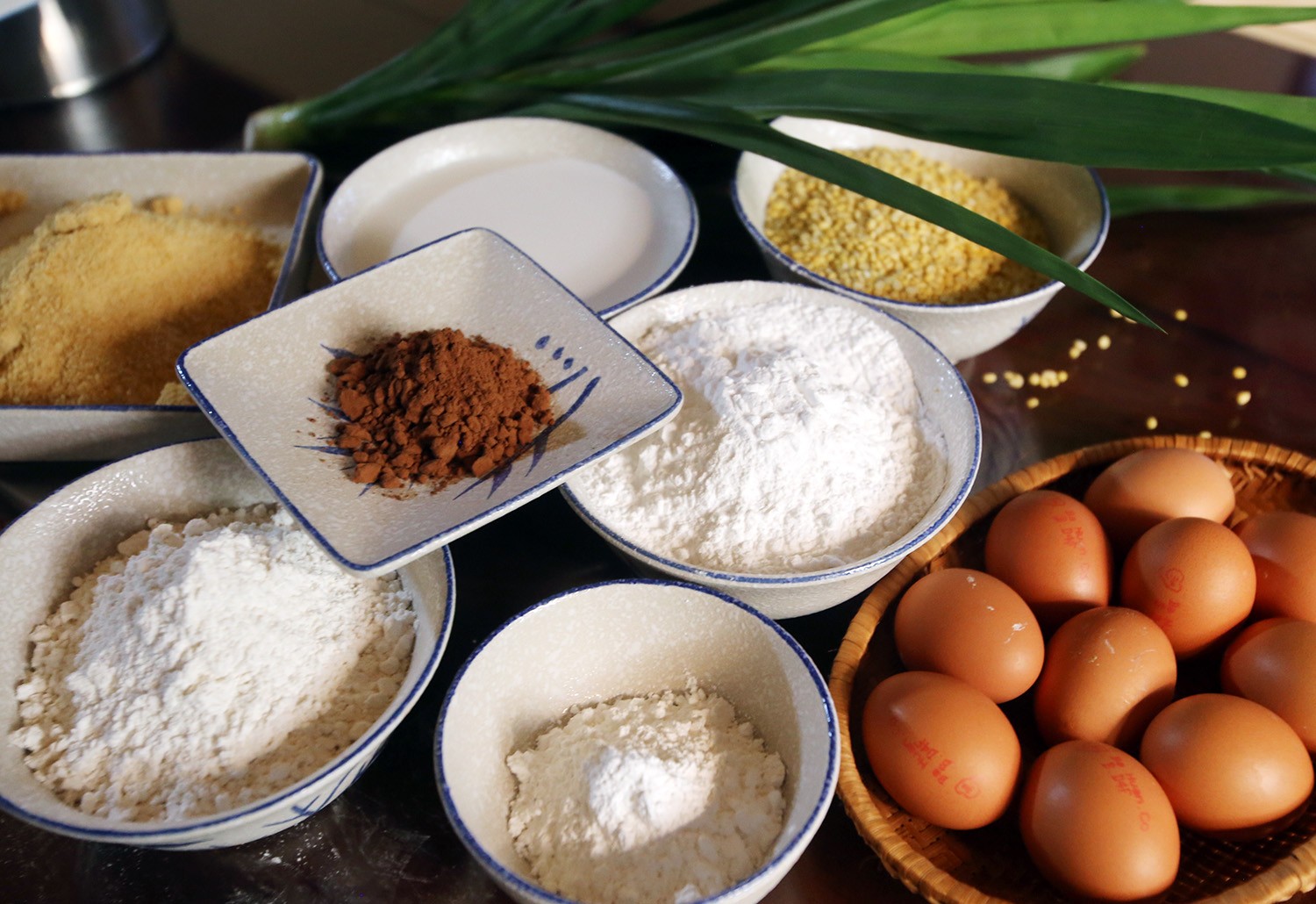 Banh Ba Lai Ingredients
Banh Ba Lai Ingredients
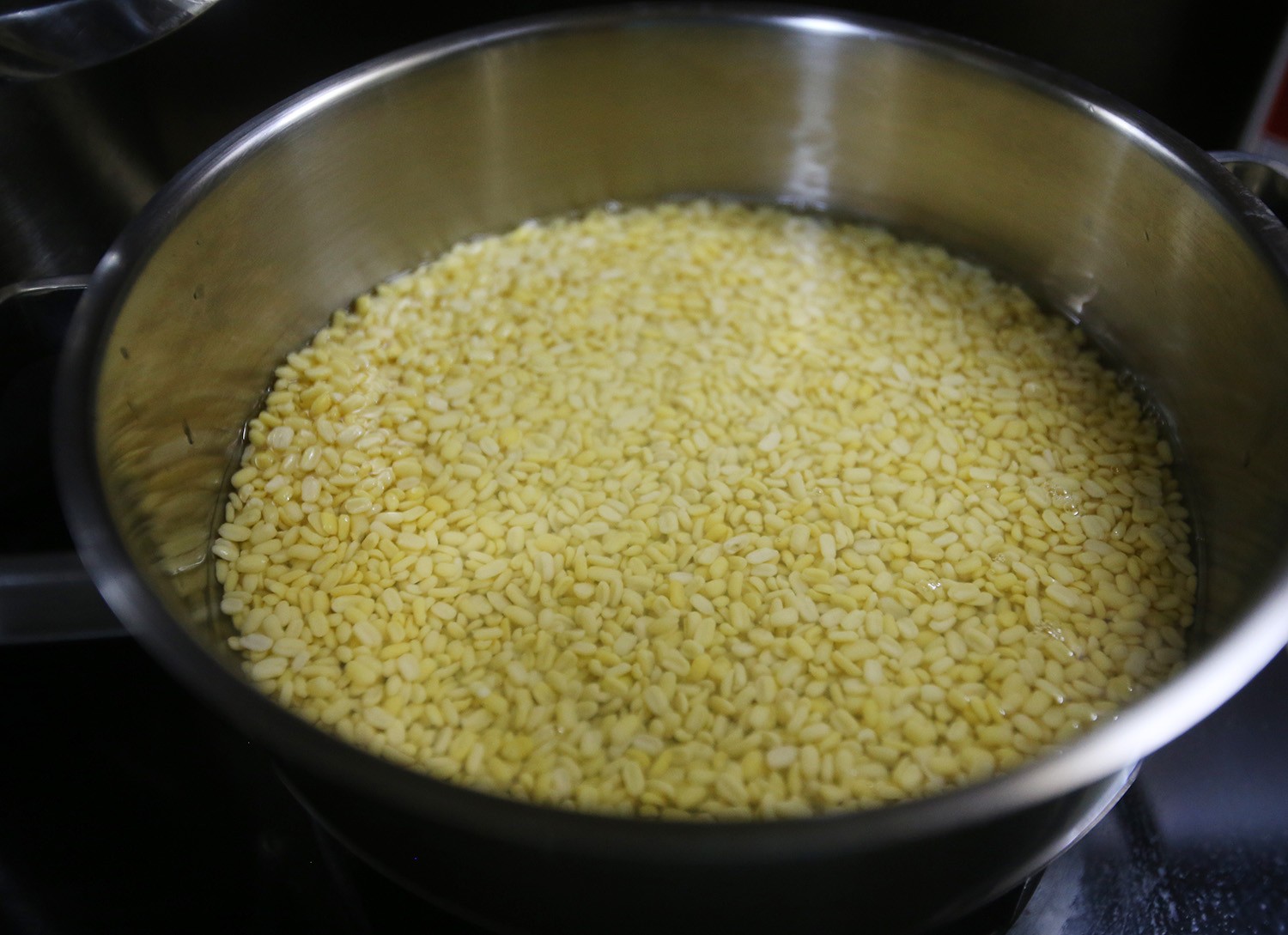 Green Mung Bean
Green Mung Bean
 Cooking Green Mung Bean
Cooking Green Mung Bean
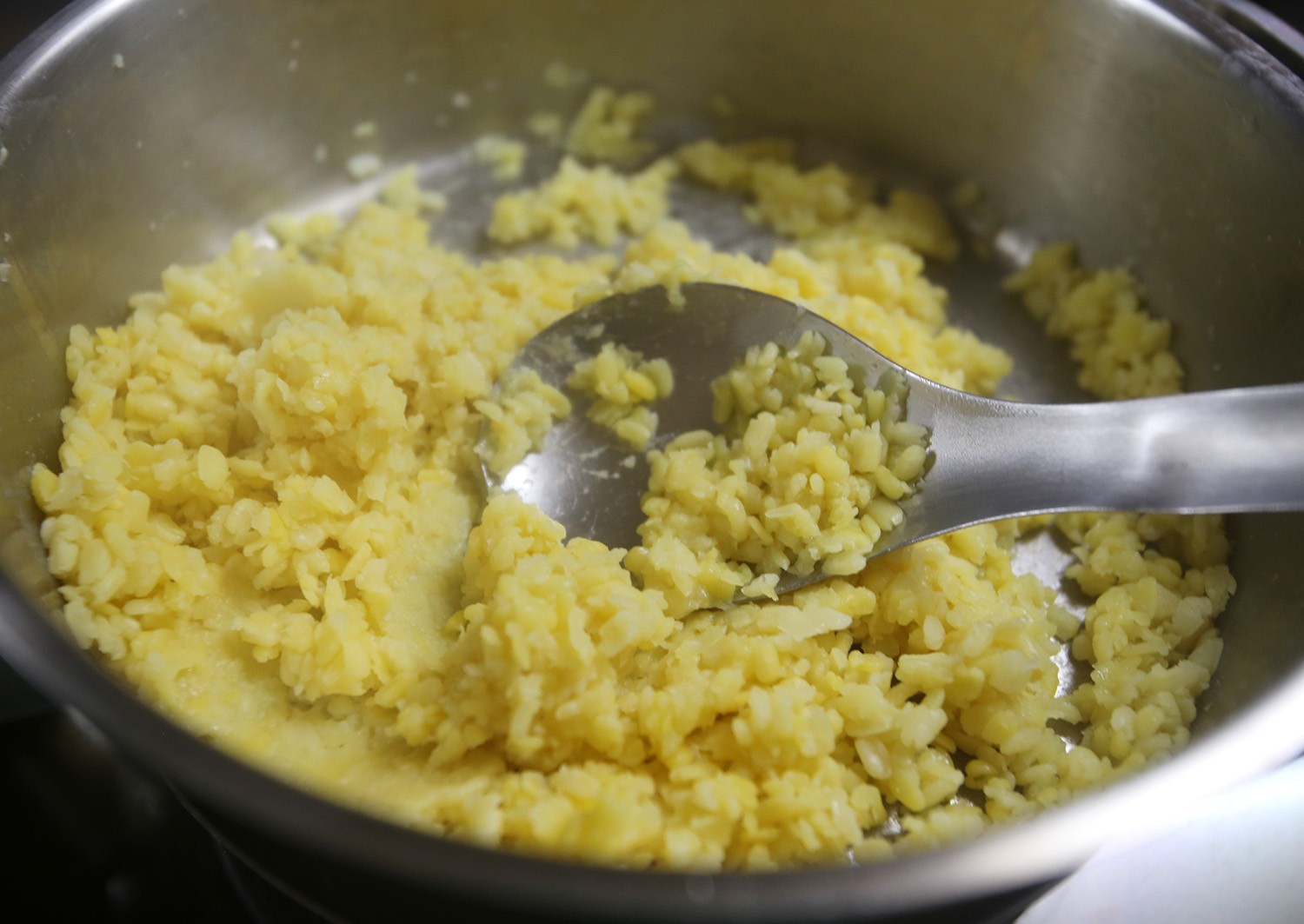 Mashed Beans
Mashed Beans
 Blending Beans with Sugar
Blending Beans with Sugar
 Smooth Paste
Smooth Paste
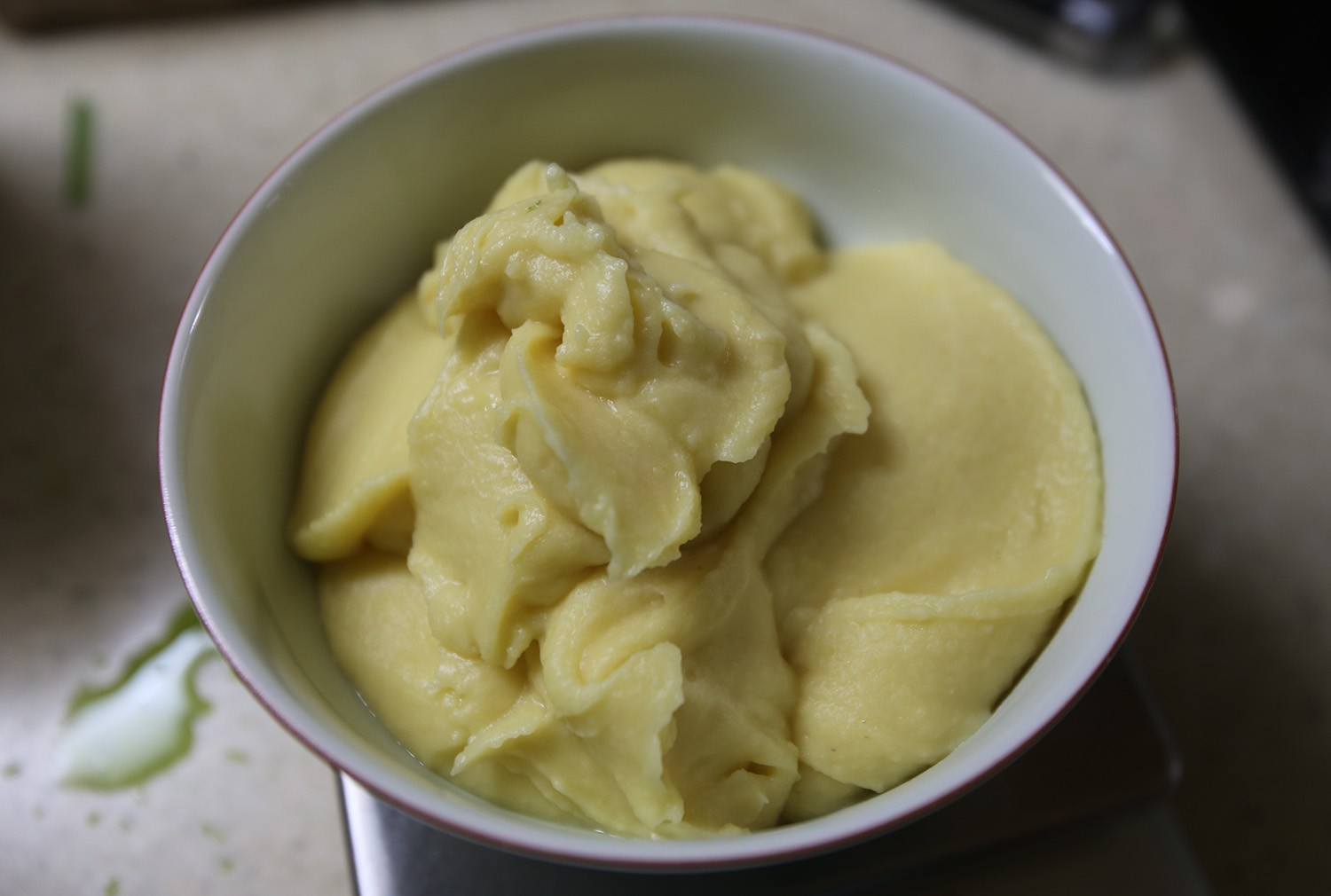 Green Mung Bean Paste
Green Mung Bean Paste
 Pandan Leaf
Pandan Leaf
 Blend with Water
Blend with Water
 Sugar to Pandan Leaf Extract
Sugar to Pandan Leaf Extract
 Cacao Powder
Cacao Powder
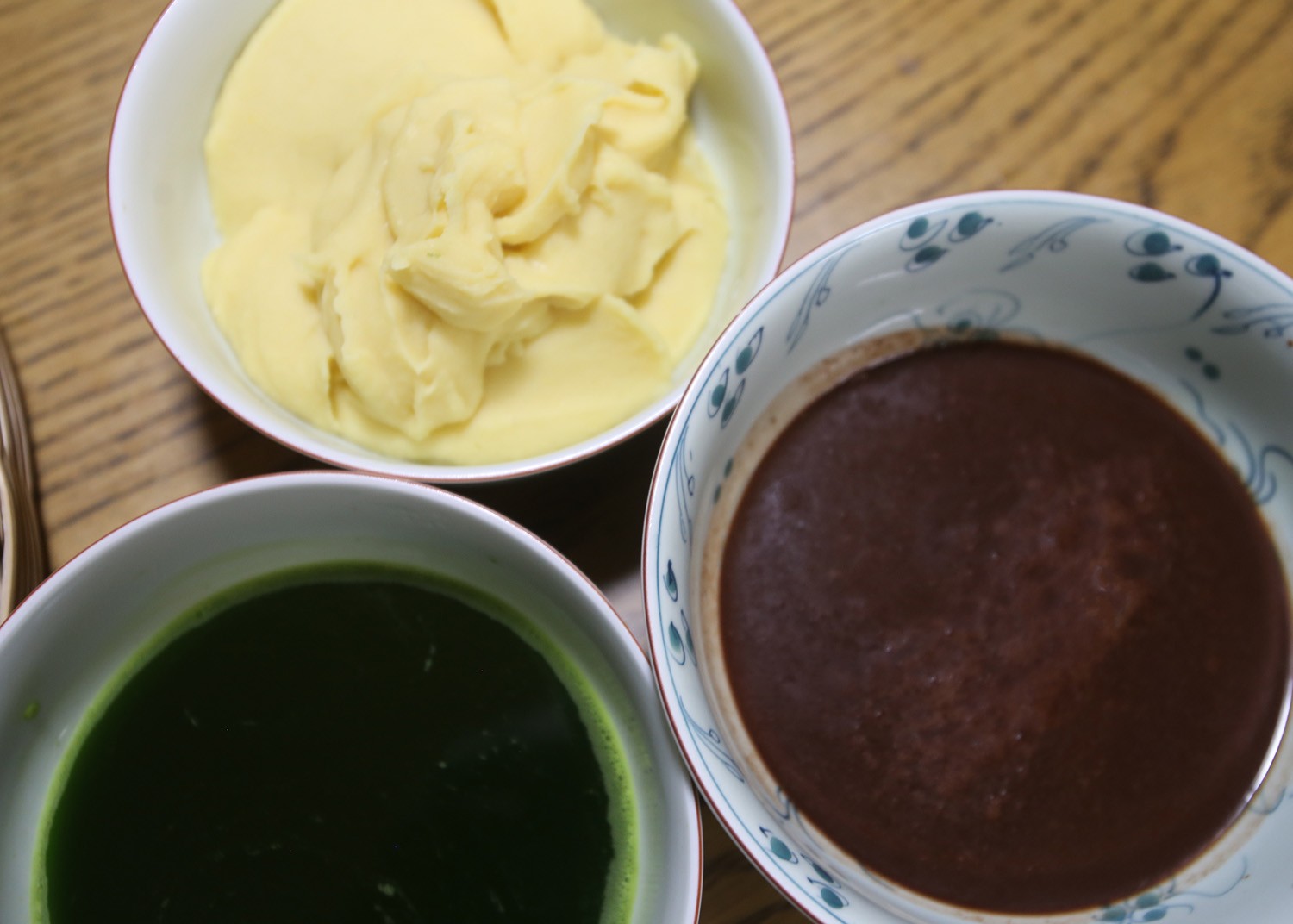 Ingredients for Layers
Ingredients for Layers
 Mixture of Coconut Milk
Mixture of Coconut Milk
 Adding Condensed Milk
Adding Condensed Milk
 Adding Flours
Adding Flours
 Smooth the Mixture
Smooth the Mixture
 Portion for Cacao
Portion for Cacao
 Mix Well
Mix Well
 Mixture of Pandan-leaf
Mixture of Pandan-leaf
 Mixture of Green Mung Bean
Mixture of Green Mung Bean
 Equal Portions
Equal Portions
 Steamed
Steamed
 Changes
Changes
 Banh Ba Lai Served Cold
Banh Ba Lai Served Cold



